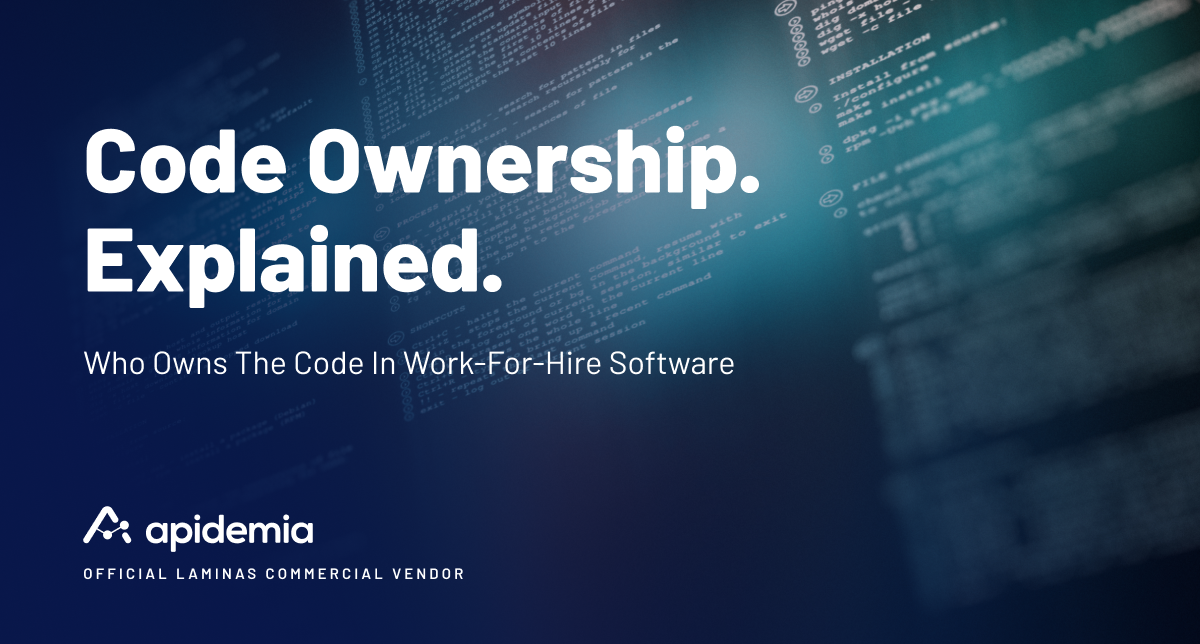Published on: 14-07-2023
One of the key legal issues that arise before a contract is signed is ownership of the resulting material. Software code has copyright laws applied to it. In this article we will discuss the particular case of work for hire. The below considerations refer primarily to an open source web platform or application built on PHP and running on UNIX infrastructure.
Code ownership in contract clauses
The default copyright owner of software code is its creator, as in the person who writes that code. This can be overwritten by a contract where the parts agree to shift the ownership of the code to, for example, the company that employs the coder mentioned before, or the company that pays for the software development. In the case of Apidemia, the default contract stipulates that the owner of the code is the client.

MIT license for frameworks and 3rd party software
No modern, complex software project begins from a blank file. Most projects start from a framework that contains some basic functionality that is common in all projects, like page navigation and user accounts. Thus, one must consider the owner of that code as well. In the case of Apidemia, all the code we use in our Dotkernel web apps is MIT licensed , starting from the custom code and ending with the 3rd party libraries.
If the code is MIT licensed, what is stopping Apidemia from sharing the custom source code with the public? This is where the contract with the client comes into play. Even though it is not encoded and falls under MIT license which is an open source software license, the source code is only shared with the Apidemia developers explicitly assigned to the project. Most importantly, the source code is owned by the client which affords the client full rights over the source code as detailed by the MIT license. Any other use of the source code is requested from the client directly.
MIT license explained
The MIT license is a short, permissive software license. Basically, it allows you to do whatever you want with the source code as long as you include the original copyright and license notice in all copies of the source code. There are many variations of this license in use. Below is probably the most commonly used version. It is also the one used by Apidemia.
Quote from MIT license:
"Permission is hereby granted, free of charge, to any person obtaining a copy of this software and associated documentation files (the “Software”), to deal in the Software without restriction, including without limitation the rights to use, copy, modify, merge, publish, distribute, sublicense, and/or sell copies of the Software, and to permit persons to whom the Software is furnished to do so"
Code structure
Let’s look at the simplified structure of web applications in order to better understand what they contain.
- 3rd party libraries offer functionality in various areas like authentication or form validation. They are created by developers and organizations outside Apidemia. The advantage of using 3rd party libraries, versus coding features from scratch, is that they offer increased functionality, security and stability. They generally employ the MIT license, but this is not universal. Apidemia explicitly checks if external source code is MIT licensed, so the MIT license applies to the codebase as a whole. If the client requests the use of source code that is not MIT licensed, Apidemia makes the client aware of this fact.
- The framework is composed of the primary 3rd party libraries and some basic code to highlight core functionality. It is the starting point for all web applications built by Apidemia. For this purpose, Apidemia has created 3 web apps (framework-like), each with a specific purpose: the Frontend is aimed at the end user, the Admin is aimed at high-level administrator work and the Api provides interaction with the database. Of course, all of these can be expanded based on the client’s needs. More often than not, all three frameworks are used for a project. Since 3rd party libraries and base code for all three frameworks are MIT licensed, Apidemia's web apps used in client projects retain the MIT license.
- The custom code is written for the project based on Work Orders agreed upon with the client. Work Orders generally include a request for a feature or update, a deadline, an assigned developer and other relevant information for a given task. The custom code offers particular functionality to the project that 3rd party libraries cannot or that isn’t included in the basic framework. Apidemia’s default contract stipulates that the custom code belongs to the client.
In conclusion, the custom-built code for a web application using any open-source apps like Dotkernel belongs to the client.
Why choose to work with Apidemia for writing work-for-hire software?
- Apidemia is one of the few companies that are official commercial vendors for Laminas.
- Our projects are built for the long term, 10-15-20 years, without fundamental changes.
- We keep the stack updated with regular updates that take advantage of newer packages.
- We have a team of highly experienced software engineers, business developers, testers and managers. Most of our developers are ZCE (Zend Certified Engineers) and are familiar with the most efficient design architecture and coding practices
Contact us

